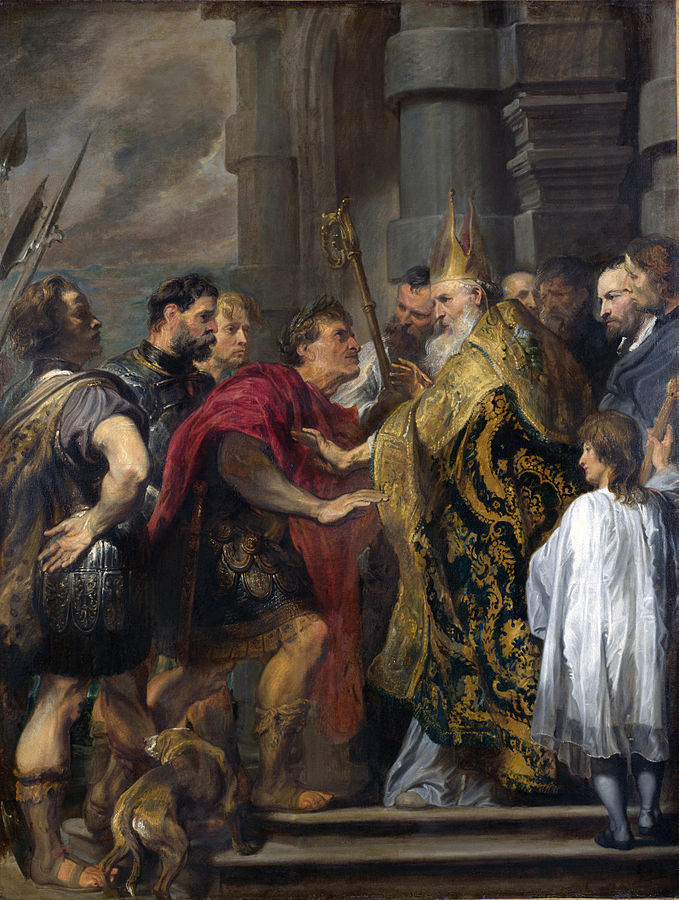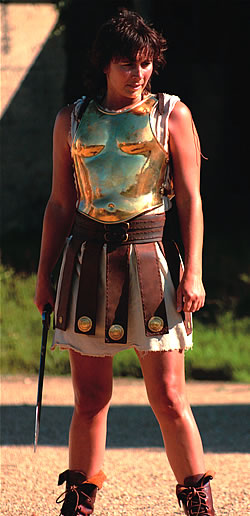 What if King Harold had won the Battle of Hastings in 1066? Or if Julius Caesar had taken notice of the warning that assassins wanted to murder him on the Ides of March? Or the Spanish Armada had defeated and conquered England in 1588? If Washington hadn’t crossed the Delaware River on Christmas night in 1776? Suppose Christianity had remained a minor Middle East cult? Intriguing questions, indeed.
What if King Harold had won the Battle of Hastings in 1066? Or if Julius Caesar had taken notice of the warning that assassins wanted to murder him on the Ides of March? Or the Spanish Armada had defeated and conquered England in 1588? If Washington hadn’t crossed the Delaware River on Christmas night in 1776? Suppose Christianity had remained a minor Middle East cult? Intriguing questions, indeed.
Whether infused with every last detail of their world as in S M Stirling’s The Peshawar Lancers, or lighter, where the alternative world is used as a setting for an adventure or thriller, such as Kate Johnson’s The UnTied Kingdom, alternate history stories are underpinned by three things: identifying the point of divergence when the alternate timeline split from our own timeline; how that world looks and works; and the historical consequences of the diversion.
INCEPTIO focuses on one main character, Karen/Carina, and her struggle to overcome her personal and professional challenges in a baffling new environment as well as to stay alive. In CARINA, she’s still learning, but getting there, while in PERFIDITAS and SUCCESSIO, she is better established and the reader learns more about Roma Nova and its culture and history.
With AURELIA we begin a second strand of adventures and go back to 1960s Roma Nova. NEXUS takes us to the mid 1970s and Aurelia’s search in London and the eastern wildlands, but back to Roma Nova. In INSURRECTIO we see how the Great Rebellion came about that threatened to destroy Roma Nova in the 1980s and Aurelia’s slightly ambiguous part at the time. RETALIO concludes this strand.
Then readers asked me, no, demanded I go back and write Roma Nova’s origin story in the late 4th century, so JULIA PRIMA and EXSILIUM became the two Foundation stories.
A quick summary about Roma Nova…
I’ve dropped background history about Roma Nova into the novels only where necessary to the story. Nobody likes a straight history lesson in the middle of a thriller! But if you are interested in a little more information about this mysterious country, read on…
What happened in our timeline?
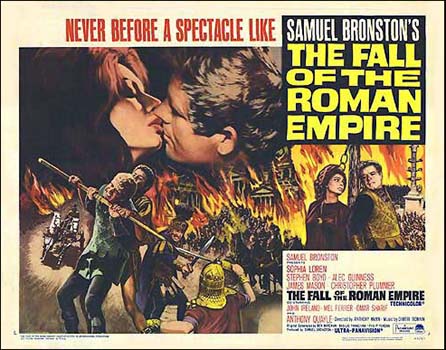
Of course, our timeline may turn out to be somebody else’s alternate as shown in Philip K Dick’s The Grasshopper Lies Heavy, the story within the story in The Man in the High Castle.
Nothing is fixed. But for the sake of convenience I will take ours as the default.
The Western Roman Empire didn’t ‘fall’ in a cataclysmic event as often portrayed in film and television.
It localised and eventually dissolved like chain mail fragmenting into separate links, giving way to rump states, local city states and petty kingdoms all facing the dynamic rise of the new peoples of Europe particularly the Franks, Visigoths, Burgundians and Alamans – see my post on the Domain of Soissons.
The Eastern Roman Empire survived albeit as the much diminished city state of Byzantium until the Fall of Constantinople in 1453 to the Muslim Ottoman Empire.
Some scholars think that Christianity fatally weakened the traditional Roman way of life and was a significant factor in the collapse of the Empire. Emperor Constantine’s personal conversion to Christianity in AD 313 was a turning point for the new religion.
His several times successor, Theodosius, had become increasingly unsympathetic to traditional Roman religious practices since the 380s and by AD 393 issued the last decree banning all pagan religions.
By the mid 390s, Theodosius had closed and destroyed temples and dismissed all priests. The sacred flame that had burned for over a thousand years in the College of Vestals was extinguished and the Vestal Virgins expelled. The Altar of Victory, said to guard the fortune of Rome, was hauled away from the Senate building and disappeared from history. (But EXSILIUM may provide the answer about exactly where it disappeared to…)
The Roman senatorial families led by Symmachus, pleaded for religious tolerance, but Theodosius made any pagan practice, even dropping a pinch of incense on a family altar in a private home, into a capital offence. In September 394, the Battle of the Frigidus was lost by the pagan commander Arbogast under the command of Western emperor Eugenius and seen as being the last military defeat of paganism. And Theodosius’s ‘religious police’ driven by the austere and ambitious bishop Ambrosius of Milan, became increasingly active in pursuing pagans…
The Roma Nova alternative timeline
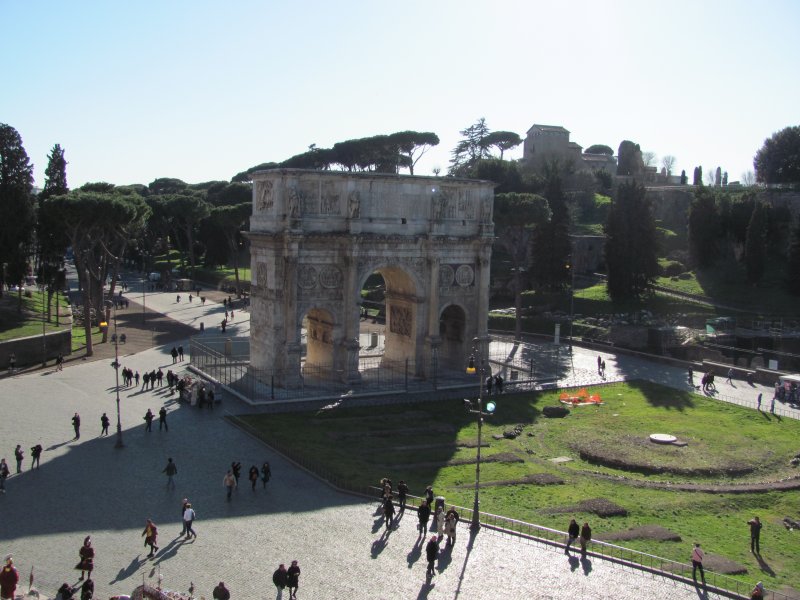
In early AD 395, six months after the Frigidus defeat, over four hundred Romans loyal to the old gods, and so in danger of execution, trekked north out of Italy to a semi-mountainous area similar to modern Slovenia.
Led by Senator Apulius and his four daughters, twelve senatorial families established a new settlement based initially on land owned by Apulius’s Celtic father-in-law, Bacausus.
Romanised, but still a proud Celt, he was content to see his daughter’s daughters settled on his tribal lands. But the newly arrived Romans stayed true to their values and defended them with strength and determination. Over the centuries, by purchase, alliance and conquest, Bacausus’s ancestral lands grew into Roma Nova.
Norman Davies in Vanished Kingdoms: The History of Half-Forgotten Europe reminds us that:
…in order to survive, newborn states need to possess a set of viable internal organs, including a functioning executive, a defence force, a revenue system and a diplomatic force. If they possess none of these things, they lack the means to sustain an autonomous existence and they perish before they can breathe and flourish.
I would add history and willpower as essential factors.
Roma Nova survived by changing its social structure; as men constantly fought to defend the new colony, women took over the social, political and economic roles, weaving new power and influence networks based on family structures.
Ancient Roman attitudes to women were repressive, but towards the later Imperial period women had gained much more freedom to act, trade and own property and to run businesses of all types. Divorce was easy and step and adopted families were commonplace.
Apulius, the leader of Roma Nova’s founders, had met Julia Bacausa, the tough daughter of a Celtic princeling, when he’d been posted to Noricum as a young officer. She’d left her native Virunum twenty years before the trek north in AD 395, travelled to Rome, found Apulius and married him. Their story is told in JULIA PRIMA.
She came from a society in which, although Romanised for several generations, women made decisions, fought in battles and managed inheritance and property. Their four daughters were amongst the first Roma Nova pioneers so necessarily had to act more decisively than they would have in a traditional urban Roman setting.
Given the unstable, dangerous times in Roma Nova’s first few hundred years, the daughters as well as sons had to put on armour and carry weapons to defend their homeland and their way of life. Fighting danger side-by-side with brothers and fathers reinforced women’s status and roles. And they never allowed the incursion of monotheistic paternalistic religions. So I don’t think that it’s too far a stretch for women to have developed leadership roles in all parts of Roma Novan life over the next sixteen centuries.
Service to the state was valued higher than personal advantage, echoing Roman Republican virtues, and the women heading the families guarded and enhanced these values to provide a core philosophy throughout the centuries.
Roma Nova’s continued existence has been favoured by three factors: the discovery and exploitation of high grade silver in their mountains, their efficient technology, and their robust response to any threat.
Remembering their Byzantine cousins’ defeat in the Fall of Constantinople, Roma Novan troops assisted the western nations at the Battle of Vienna in 1683 to halt the Ottoman advance into Europe. (Honoria’s Story) Nearly two hundred years later, they used their diplomatic skills to help forge an alliance to push Napoleon IV back across the Rhine as he attempted to expand his grandfather’s empire.
Prioritising survival, Roma Nova remained neutral in the Great War of the 20th century which lasted from 1925 to 1935. The Greater German Empire, stretching from Jutland in the north, Alsace in the west, Tyrol in the south and Bulgaria in the east, was broken up afterwards into its former small kingdoms, duchies and counties. Some became republics. There was no sign of an Austrian-born corporal with a short, square moustache.
Twenty-three years before the action of INCEPTIO in the early 21st century, Roma Nova was nearly destroyed by a coup, a brutal male-dominated consulship and civil war. A weak leader, sclerotic and outmoded systems that had not developed since the last great reform in the 1700s and a neglected economy let in a clever and ruthless tyrant. But with characteristic resilience, the families fought back and reconstructed their society, re-learning the basic principles of Republican virtue, while subtly changing it to a more representational model for modern times.
Today, although tiny, perhaps the size of Luxembourg, Roma Nova has become one of the highest per capita income states in the world.
And the New World that features in the first few chapters of INCEPTIO?
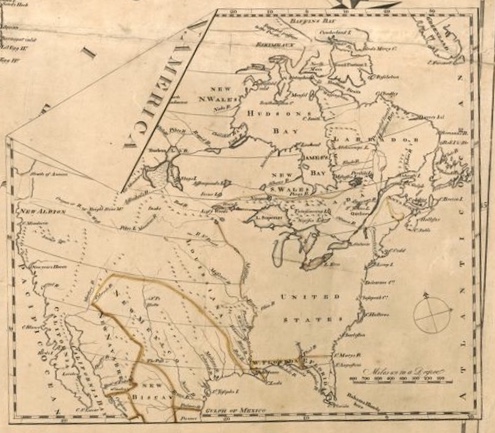
Inset in the map “The United States according to the definitive treaty of peace signed at Paris Sept. 3d. 1783. William McMurray, Robert Scot”
New York, where we find 24-year-old Karen Brown living and working, is an Autonomous City in the Eastern United States (EUS) that the Dutch only left in 1813 and the British in 1865.
The New World French states of Louisiane and Québec are ruled by Gouverneurs-Généraux on behalf of Napoléon VI. California and Texas belong to the Spanish Empire and the Western Territories are a protected area for the Indigenous Peoples.
As J K Rowling knew with Harry Potter’s world, although you don’t put it in the books, you have to have worked it all out in your head.
Updated 2024: Alison Morton is the author of Roma Nova thrillers – INCEPTIO, CARINA (novella), PERFIDITAS, SUCCESSIO, AURELIA, NEXUS (novella), INSURRECTIO and RETALIO, and ROMA NOVA EXTRA, a collection of short stories. Audiobooks are available for four of the series. Double Identity, a contemporary conspiracy, starts a new series of thrillers. JULIA PRIMA, a Roma Nova story set in the late 4th century, starts the Foundation stories. The sequel, EXSILIUM, is now out.
Download ‘Welcome to Alison Morton’s Thriller Worlds’, a FREE eBook, as a thank you gift when you sign up to Alison’s monthly email update. You’ll also be among the first to know about news and book progress before everybody else, and take part in giveaways.




